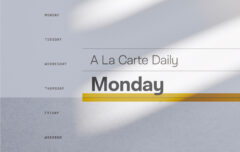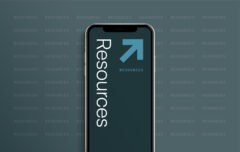A couple of weeks ago someone captured a photograph of a smiling or sneering, mocking or awkward young man standing face-to-face with a peacemaking or threatening, respectful or bad-mannered older man. This photo was posted to Twitter. And you know what happened next. But even though you know what happened, it’s worth considering why it happened.
Every medium—every form of communication—enables or even promotes certain virtues and certain vices. That’s not to say any medium is intrinsically good or intrinsically evil, but that each comes with its own benefits and drawbacks, its own ways of promoting both helpful and sinful behaviors. Such is life on this side of Genesis 3. As we use our various media, we need to consider what helpful behaviors they promote and what sinful behaviors they enable. The degree to which we are aware of each predicts the degree to which we’ll use our media for the good or the harm of others.
What we love about Twitter is what we ought to fear about it.
The photo in question was shared through the medium of Twitter. What virtues and vices are built into Twitter? At the top of both lists is urgency. It’s fast—so fast that people in New York City can read about an earthquake before they feel the ground begin to tremble, and so fast that we can broadcast full-out lies or half-formed judgments before we’ve got any true assessment of the facts. What we love about Twitter is what we ought to fear about it. While it allows us to stay tuned to current events like never before, it also promotes urgency more than thoughtfulness, haste more than contemplation. Twitter’s great strength is its great weakness.
When that photo swept across the world, most of us felt immediate affinity toward one of the people in the photo. We were immediately tempted to take sides for one and against the other. We saw what we wanted to see. (Which, I think, is a matter for each of us to consider and to address before the Lord. What was it about one that, at a glance, made us assume he was the offender? What was it about the other that, at a glance, made us assume he was the offended?) But Twitter tempted us to go farther than our feelings. It enabled us to broadcast our hasty conclusions, to respond before gaining access to facts, to speak before hearing from the people involved and the witnesses around. It tempted us to externalize our impressions and to do so before an audience of hundreds or thousands or hundreds of thousands.
Our sinfulness compels us to jump to conclusions; our technologies enable us to broadcast them. While we are all tempted to make hasty judgments privately, those with Twitter accounts are tempted to do so publicly. This creates a kind of perfect—or extremely imperfect—storm. Those who jump to conclusions and speak them hastily not only sin, but also draw others into their sin. After all, they don’t just state bare facts, but pass moral judgment and call for others to do the same. They use their influence to influence others to make the leap with them.
Those who rush to judgment and disseminate disinformation compound their sin.
And, this, I think, bears special consideration among Christians: it’s a sin to jump to conclusions and a double-sin to do so publicly. Those who rush to judgment and disseminate disinformation compound their sin. If those who teach will be judged with greater strictness, surely too will those who set out to gain a following. With influence comes responsibility.
Media ecologists like to remind us that our technologies are extensions of ourselves and our abilities, so that the hammer is an extension of the arm and the bicycle is an extension of the feet. We best understand Twitter as an extension of the tongue—and the Bible practically begs us to read its warnings about the power of the tongue to build up or tear down, to worship God or destroy our neighbor. It’s stuffed full of warnings about the evil of our hearts and the power of our words. It instructs us in our responsibility to moderate our speech (and our tweets), to guard against speaking hastily, and to determine never to pronounce judgment rashly. It demands we see and admit that Twitter’s great strength is its great weakness and that we need to be careful—so careful—to use our abilities for good rather than evil. Amid all our advanced technologies, we cannot and must not forget our basic Christianity.










